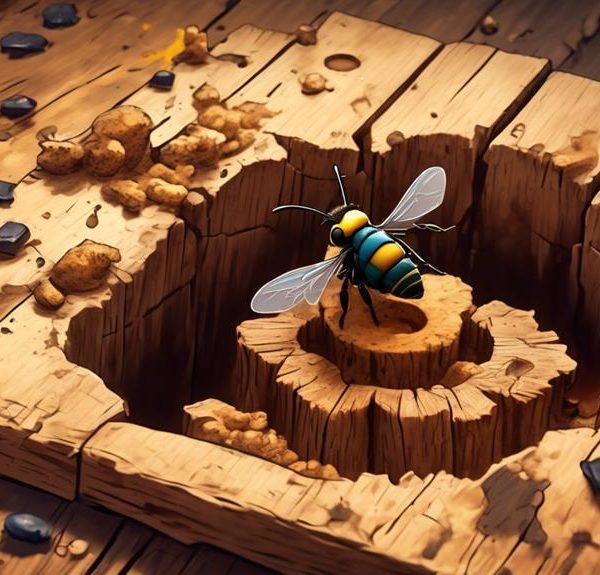Just how harmful are carpenter bees to your home? Discover their potential for destruction and ways to prevent it.
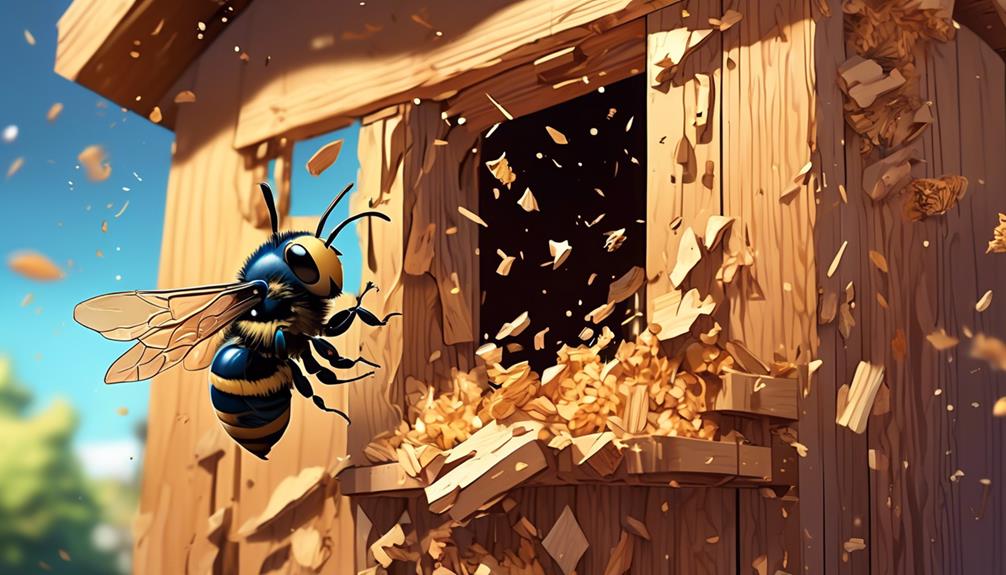
Do Carpenter Bees Damage Homes
Like a wolf in sheep's clothing, the seemingly harmless carpenter bee can be a silent destroyer of your home. You've probably seen them buzzing around your garden, their shiny, black bodies glistening in the sunlight, but have you ever stopped to consider the potential damage they might be causing to your property?
Their name doesn't come from a love of woodworking, but rather their propensity for burrowing into wood. While they may not set out to wreak havoc, their nesting habits could be compromising the structural integrity of your home.
But how extensive can this damage be? And what can you do to prevent it? In the following, we will explore the answers to these pressing questions.
Key Takeaways
- Carpenter bees do not feed on wood, but instead create tunnels for their eggs.
- The first sign of a carpenter bee infestation is a round, smooth hole in the wood.
- Carpenter bees are attracted to untreated, unpainted wood and older, weathered wood.
- Taking preventive measures such as inspecting the property, treating wood with paint or stain, and sealing existing holes can help protect homes from carpenter bee infestations.
Understanding Carpenter Bees Behavior
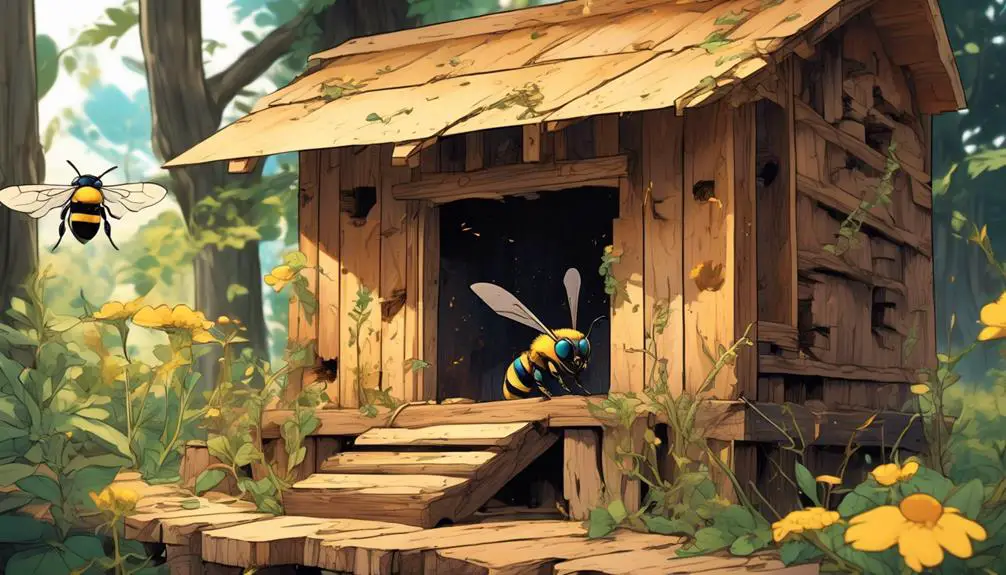
Diving into the realm of carpenter bees, it's important to understand their unique behaviors, as this knowledge can aid in preventing potential damage to your home. Unlike honey bees that live in colonies, carpenter bees are solitary. The females drill holes into wood, creating tunnels where they lay their eggs. These tunnels, over time, can compromise the structural integrity of your wooden structures if left unchecked.
Now, you might think, 'Well, I don't see any bees around, so I'm safe.' Not quite. Carpenter bees don't actually feed on the wood. They're out foraging for nectar and pollen during the day, so you mightn't notice them. However, the males, although they don't drill, are quite territorial and hover around the nest, which can be off-putting.
Furthermore, understanding that these bees prefer bare, unpainted or untreated wood can help in prevention. They're less likely to attack painted or treated wood. So, you might want to consider painting or treating your wood surfaces.
This detailed knowledge of their behavior can go a long way in preventing potential damage they might cause. Knowledge is indeed power, especially when dealing with carpenter bees.
Identifying Carpenter Bees Damage
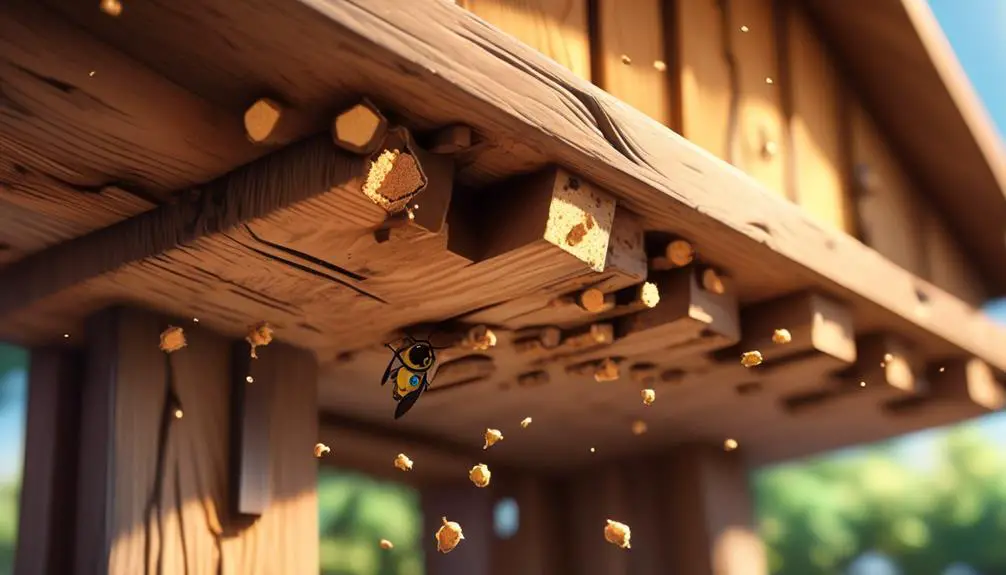
Having armed yourself with an understanding of carpenter bees' behavior, it's now crucial to know how to identify the damage they can inflict on your home. The first sign of a carpenter bee infestation is usually a round, smooth hole that appears in the wood of your home. This hole is about the diameter of a pencil, which is where the female bee lays her eggs.
However, the holes are not the only sign. You might also notice a sawdust-like substance, known as frass, around the area. This is a byproduct of the bee's excavation. Furthermore, you might see staining on the wood from the bees' defecation.
To help you identify these signs, here's a detailed table:
Sign | Description | Emotional Impact |
|---|---|---|
Round Hole | Smooth, about the diameter of a pencil | Evoke feeling of unease, invasion |
Frass | Sawdust-like substance around the hole | Increase concern, irritation |
Staining | Marks on the wood from bee's defecation | Evoke disgust, urgency |
Understanding these signs can help you take quick action against an infestation, potentially saving your home from further damage.
Risk Factors for Carpenter Bees Infestation

In assessing your home's vulnerability to a carpenter bee infestation, it's important to consider several key risk factors.
First, carpenter bees prefer untreated, unpainted wood. If your home's exterior features a lot of bare wood, you're essentially rolling out the welcome mat for these insects.
Secondly, the state of decay of the wood matters. Carpenter bees are attracted to older, weathered wood. They're less likely to burrow into fresh, hard wood. Thus, homes with older wooden structures are at a higher risk.
Thirdly, location plays a role. Carpenter bees are more prevalent in warmer climates. If you live in such an area, your home is at a greater risk of infestation.
Lastly, consider the surrounding vegetation. Carpenter bees feed on plant pollen. The closer your home is to a rich source of pollen, the more likely it's to attract these pests.
In short, if your home is made of untreated, weathered wood, is located in a warm climate, and is near ample vegetation, it's at a high risk for carpenter bee infestation. Awareness of these factors can help you take preventive measures.
Preventive Measures Against Carpenter Bees
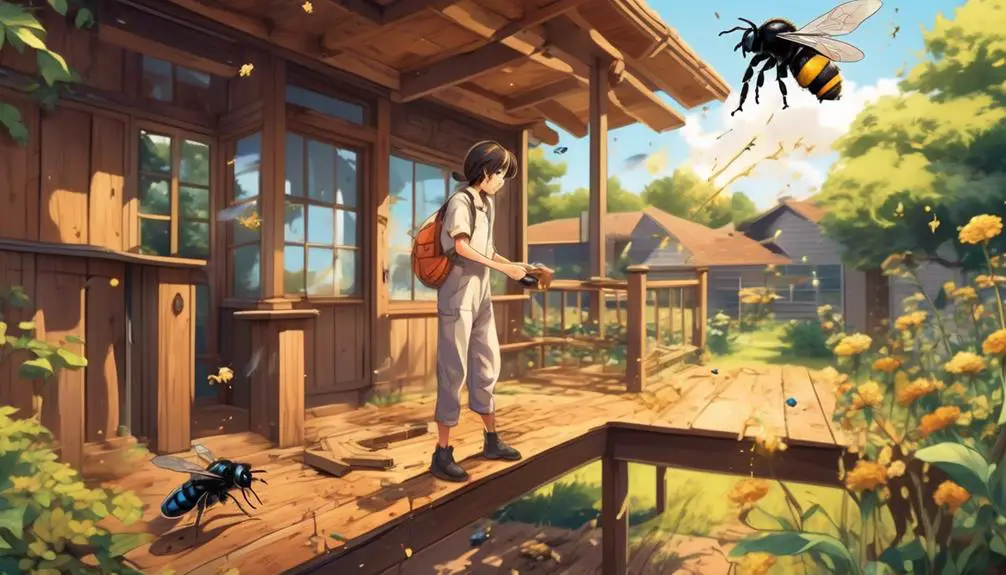
Understanding these risk factors, you're better equipped to take steps to protect your home from a carpenter bees infestation. Firstly, you've to inspect your property regularly. These bees are attracted to untreated wood, so keep an eye for any signs of infestation such as holes or sawdust. If you catch it early, it's easier to manage.
Secondly, consider treating the wood around your home. Carpenter bees prefer untreated wood. By staining or painting, you're making it less attractive to them. Use oil-based paints or stains for the best protection, as water-based products aren't as effective.
Thirdly, seal any existing holes. Once a carpenter bee has made a nest, it's likely to return unless you block its access. You can use a wood putty or a caulking compound to fill these holes.
Lastly, if you're dealing with a severe infestation, it may be time to call in a professional. Pest control companies have the experience and tools necessary to effectively remove carpenter bees from your property.
Professional Solutions for Bee Infestations
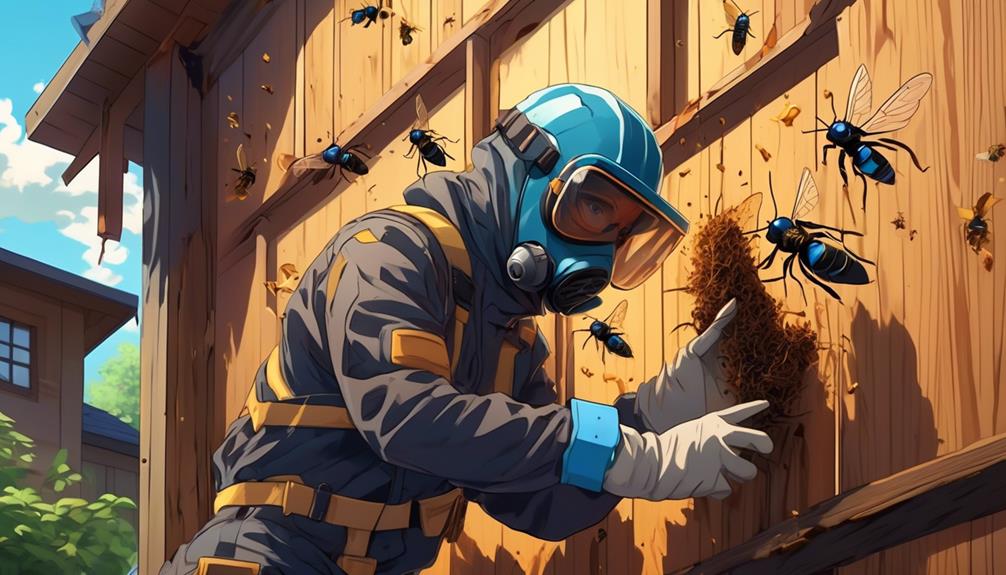
When you're faced with a persistent or large-scale carpenter bee infestation, turning to professional pest control services can be the most effective solution. These experts have access to specialized tools, techniques, and insecticides that aren't readily available to the average homeowner.
One method professionals use is injecting insecticides directly into the nests. They've the knowledge to identify the most active nests and target them with precision. This treatment is often more effective than over-the-counter solutions, and it reduces the chances of structural damage to your home.
Furthermore, pest control professionals can provide preventative treatments to discourage carpenter bees from returning. These might include applying residual insecticides to vulnerable areas or installing physical barriers.
Conclusion
In conclusion, you've learned carpenter bees can indeed damage your home, drilling into wood for nesting.
You're now equipped to identify their telltale signs and understand what attracts them.
Don't forget, prevention is key, but if you're facing an infestation, professional solutions may be necessary.
Stay informed and vigilant to protect your home from these industrious, wood-boring bees.

